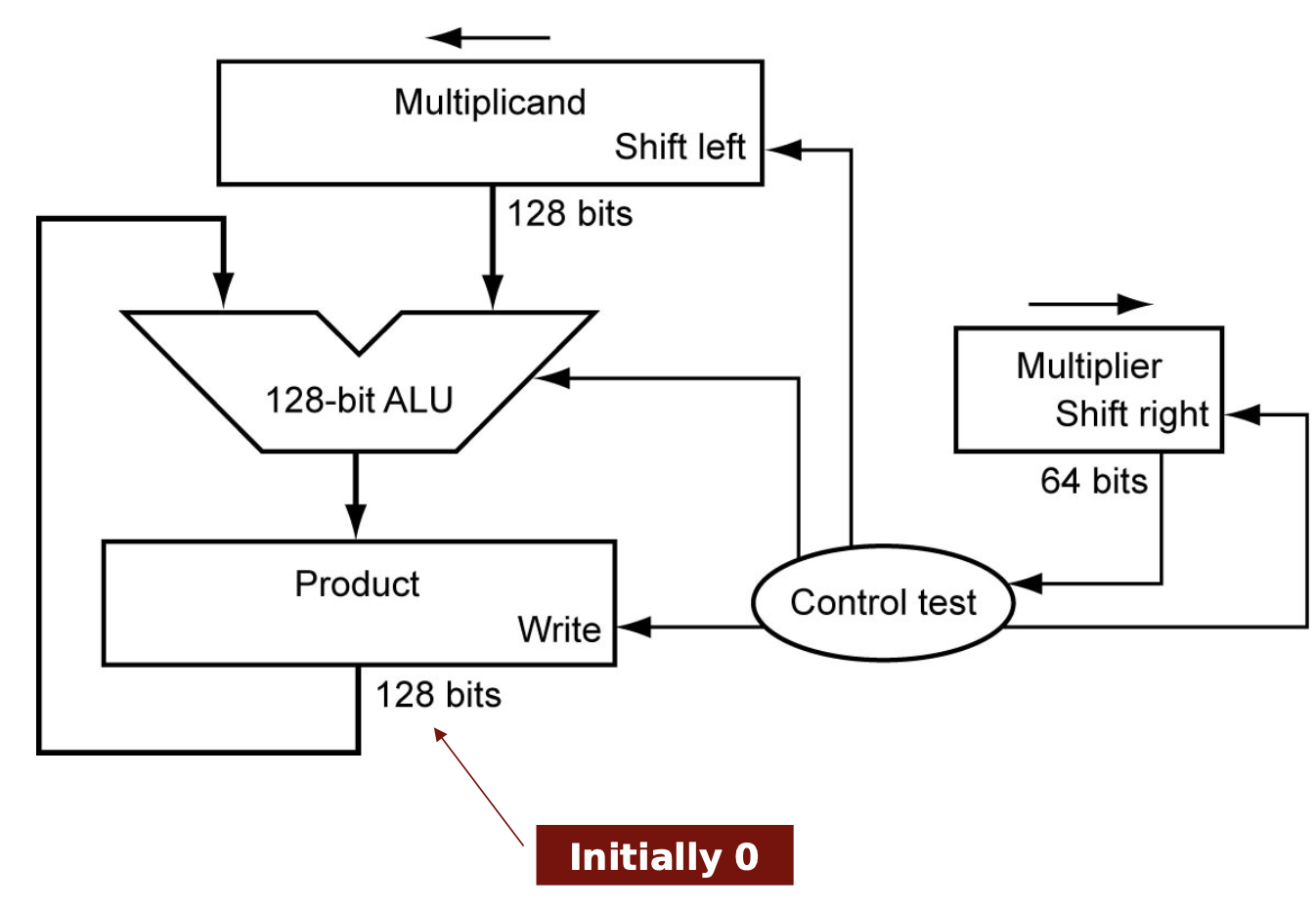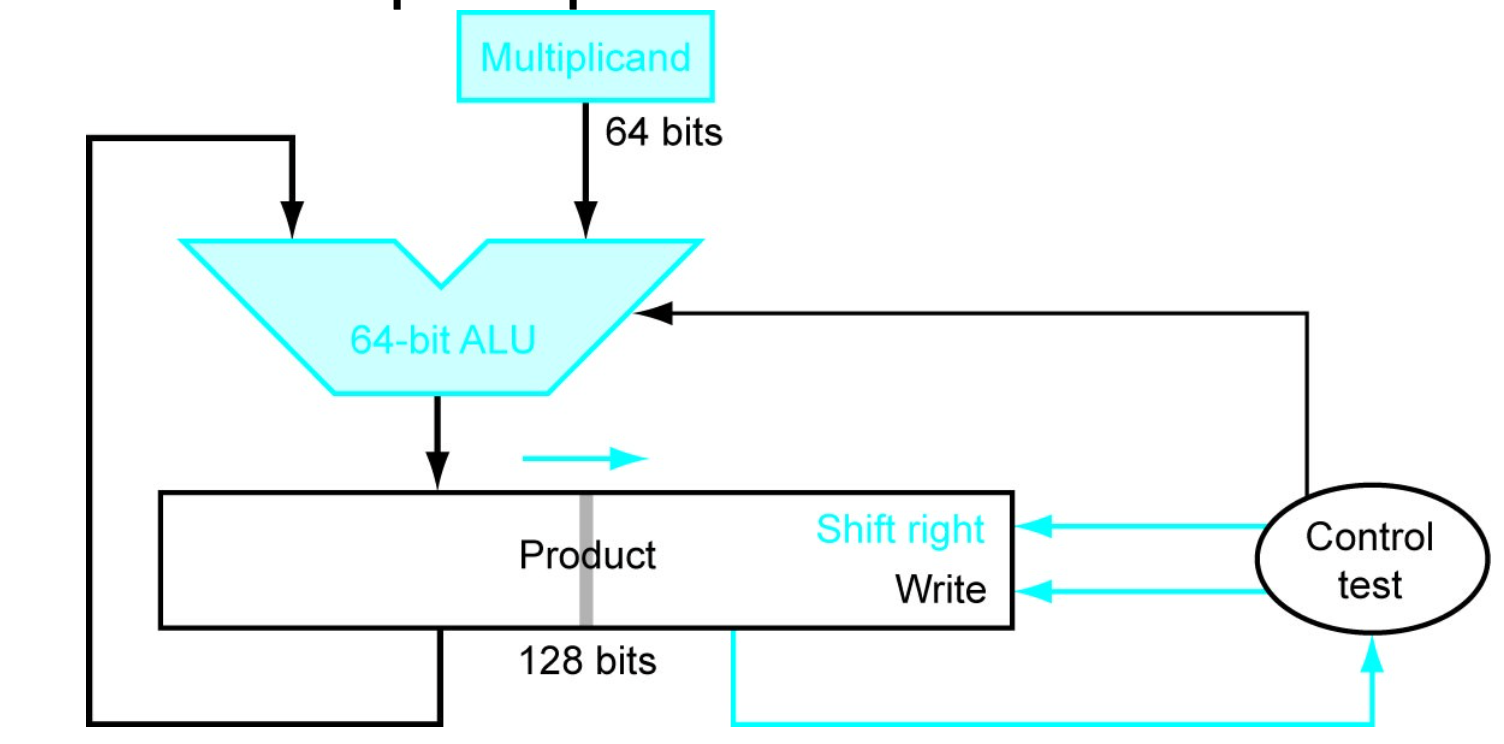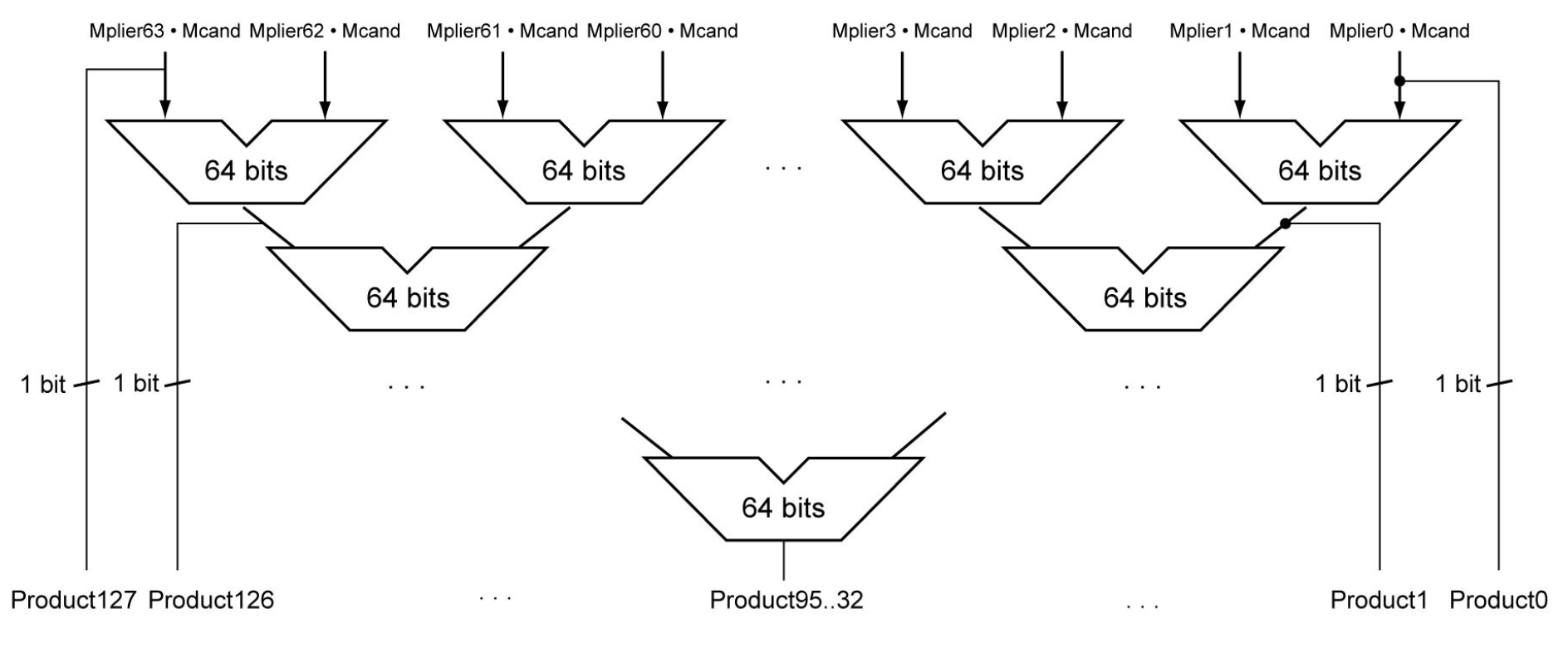Arithmetic Operations
Integers
Addition
- Just do it like decimal addition with add and carry
- Overflow if the result is out of range
- Pos + Neg: No Overflow possible
- Pos + Pos: Overflow if sign bit is 1
- Neg + Neg: Overflow if sign bit is 0
- (you know it overflowed if the sign bit flipped)
Subtraction
- Don’t actually subtract, add a positive to a Two’s Complement
- Overflow if
- Pos - Pos, Neg - Neg: No overflow possible
- Neg - Pos: Overflow if sign bit is 0
- Pos - Neg: Overflow is sign bit is 1
Multiplication
- Start with long-multiplication approach
- Length of product is the sum of operand lengths
- Don’t use two’s complements numbers, just use multiplication rules for sign and add it back at the end
- Hardware
- Unoptimized

- For each digit in the multiplier
- Logical shift the multiplicand left
- If the digit in the multiplier is 1, add that number to the intermediate product
- Optimized

- Multiplier is initially placed in the right half of the product register
- need to go over the steps how this works
- Faster Multiplier
- Uses multiple adders
- Calculates every step of the multiplication at once
- Cost/performance tradeoff
- Can be pipelined
- Several multiplication performed in parallel

- log2n levels of adders
- Instructions
MUL: Multiply
- Gives the lower 64 bits of the product
- What we can just use in class (assume no inputs will overflow)
SMULH: Signed multiply high
- Gives the upper 64 bits of the product, assuming the operands are signed
UMULH: Unsigned multiply high
- Gives the upper 64 bits of the product, assuming the operands are unsigned
Division
- Use long division
- Steps
- Check for 0 divisor
- Long division approach
- If divisor ⇐ dividend bits
- 1 bit in quotient, subtract
- Else
- 0 bit in quotient, bring down next dividend bit
- Restoring division
- Do the subtract, and if remainder goes < 0, add divisor back
- Signed division
- Divide using absolute values
- Add sign bit back at the end
- n-bit operands yield n-bit quotient and remainder
- Instructions
SDIV X1, X2, X3 → X1 = X2 / X3 (signed)
- X1 contains the quotient (remainder is lost)
- If you need the remainder perform
- SDIV X1, X2, X3 // X1 has quotient
- MSUB X4, X2, X3, X2 // X4 = X2 – X1 * X3
- MSUB works because remainder = dividend - quotient * divisor
UDIV (unsigned)
- Hardware
- Very similar to the multiplication
- Cannot be parallelized
- Because you cannot do the next step until you find the intermediate remainder when doing long division
Floating Point
Addition
- Steps
- Align binary points
- Shift number with smaller exponent
- Add significands (the fractional component)
- Normalize result and check for over/underflow
- Round and renormalize if necessary
- Hardware
- Much more complex than integer adder
- Usually takes several clock cycles (but can be pipelined)
- For signs, just do it in your head because how it is actually handled is out of scope
- Because of rounding, associativity sometimes does not apply to floating point operations
Multiplication
- Steps
- Add exponents
- For biased exponents, subtract bias from sum
- Multiply significands
- Normalize results and check for over/underflow
- Round and renormalize if necessary
- Determine sign of result form signs of operands
- Hardware
- Lot of similar complexity to FP adder
- But uses a multiplier for significands instead of an adder
Hardware
- FP arithmetic hardware usually does
- Addition (4), subtraction (4), multiplication (7), division (~20), reciprocal (~20), square-root (a lot)
- Numbers are the time in unit of the time that integer addition takes
- FP ←> integer conversion
- Operations take several cycles but can be pipelined
Instructions
- Seperate FP registers
- 32 single precision: S0, …, S31
- 32 douple-precision: DS0, …, DS31
- Sn stored in the lower 32 bits of a Dn
- FP instructions operate only on FP registers
- Load/Store
- Single precision: LDURS, STURS
- Double precision: LDURD, STURD
- Single-precision arithmetic
- FADDS, FSUBS, FMULS, FDIVS
- Double-precision arithmetic
- FADDD, FSUBD, FMULD, FDIVD
- Single- and double-precision comparison
- Graphics and media processing operates on vectors of 8-bit and 16-bit data types
- SIMD = Single instruction, multiple data
- Multiple values can be stored in one register
- When doing arithmetic, carry is disabled on the border between the sections


